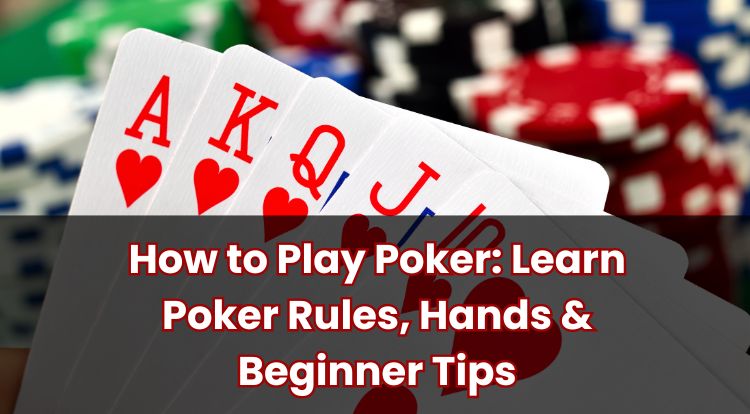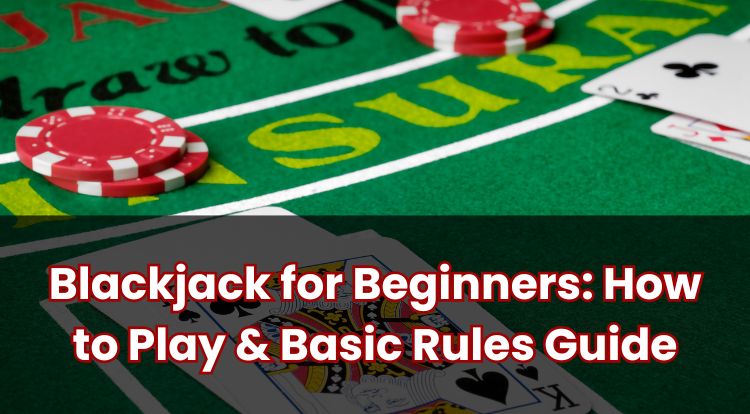Check in Poker: What It Means and When to Check
Checking is one of the most frequently used actions in poker, but its subtlety is easy to miss. Understanding how it works—and when it makes sense—can lead to more measured decisions at the table.
This blog post explores the function of a check, how it fits into each stage of a hand, and when it might be the most practical route forward. It also highlights how it differs from other standard actions and outlines examples, strategies, and common mistakes.
Read on to learn more.
What Does Check Mean in Poker?
In poker, to check means to pass the action to the next player without putting chips into the pot. This option is only available under certain conditions, specifically when no one else has bet in the current round.
By checking, a player stays involved without taking further steps for now. It’s often treated as a pause, where nothing is added, but nothing is given up either. Once another player bets, however, that option disappears.
You might think of a check as a kind of placeholder. It maintains a presence in the hand, allowing for further action if the opportunity comes back around.
This quiet move has strategic value that depends on more than just the strength of a hand. Timing, position, and opponent behaviour all come into play, which becomes clearer as the hand unfolds.
How Does Checking Work in a Hand?
When action reaches a player and no one has yet bet, that player can check. If everyone at the table checks, the round ends and the game moves forward—often to another community card.
However, a check isn’t always the final word. If someone else bets later in the same round, the action can return to the original player. At that point, they face a new decision: whether to match the bet, let the hand go, or perhaps take a more assertive line.
This last possibility—where a player initially checks and then raises after an opponent bets—is known as a check-raise. It’s a tactical option that can change the pace of a hand and shift pressure back onto the bettor.
Still, a check is not an exit. It simply defers the moment of action. Whether the goal is to wait for more information or to lay a trap, understanding its timing is essential.
When Should You Check in Poker?
Checking becomes especially useful when a player wants to proceed without altering the pot size. This often applies to hands that hold some strength but may not be solid enough to justify betting.
For instance, a hand with potential but not much immediate value might benefit from seeing another card without committing chips. This can be particularly effective when holding cards that could improve on later streets. In these moments, the possibility of a “free” card is appealing.
That said, giving opponents a chance to improve can come at a cost. If the next card strengthens their hand, the original checker may be left in a weaker position. So, while checking can be practical, it comes with trade-offs that depend on the board and how many players are still involved.
Position also plays a role. Players who act earlier in the round are more likely to check, while those later in the order may check for entirely different reasons, such as keeping their intentions hidden. On occasion, delaying a bet by checking first can work to a player’s advantage.
And sometimes, strong hands are checked, too—but for reasons that aren’t obvious at first glance. That comes down to balancing decisions, a concept we’ll revisit shortly.
The Difference Between Check, Call and Fold
Poker involves several decisions, each with its own purpose. While checking is about holding back momentarily, the other options shape the hand more directly.
A call is a response to a bet—matching the chips required to continue. It can be used with hands that are strong enough to continue but not worth raising. Players might call to see another card or to test the strength of an opponent’s line.
A fold, by contrast, means stepping away. It’s used when continuing would lead to an undesirable outcome, whether because the hand is weak, the price is steep, or the situation is simply unfavourable.
Returning to the check—it differs from these in a fundamental way. It involves no cost and no commitment beyond waiting. But that’s not the same as inaction. Each check reflects a specific intention—whether that’s to delay, disguise, or draw something out.
Why Checking Can Be a Smart Choice
Although checking may seem passive on the surface, it plays a valuable role when used with intention. In fact, it can serve several key purposes that become more apparent over time:
- Managing the pot: Certain hands are best played when the pot remains at a modest size. For example, a top pair with a weaker supporting card often plays more comfortably when the action is kept in check.
- Observing responses: Sometimes, what comes after a check says more than any bet could. If an opponent responds with an immediate bet or hesitation, it may reveal more about the strength of their hand.
- Inviting action: Counterintuitively, checking can be used to provoke a reaction. With a strong hand, checking might lure opponents into betting, setting the stage for a more profitable response later.
- Disguising strength: Always betting with good hands and checking with weak ones creates patterns. By checking in spots where strength is unexpected, players make themselves less predictable and harder to read.
So, checking is less about avoidance and more about shaping the hand on your terms. But where does this show up in practice?
Common Situations Where Players Check
One of the most frequent places for a check is at the beginning of a betting round, especially when the player to act has reason to hesitate. On complicated boards, for instance, where many potential hands could connect, players may prefer to wait and see.
Another scenario is with drawing hands. A player holding a four-card straight or flush draw might check, hoping to see the next card without committing more chips. If an opponent bets small, calling might become the next step, especially if the price is right.
When acting later in the round, checking behind is often about maintaining flexibility. With a hand that has some value but not enough to bet confidently, the player might choose to see another card before deciding what to do next.
Sometimes, even before the flop, checking comes into play. In games with blinds, if no one raises pre-flop and all players simply match the big blind, that player may check to see the flop for free. It’s a quiet moment, but one that still moves the game forward.
These examples show the range of uses, but they also hint at the decisions that come next. To avoid problems, players must recognise when a check is useful and when it becomes a crutch.
Mistakes to Avoid When Checking
Checking too quickly or too often can lead to missed opportunities. If it becomes automatic, it can give away value or allow opponents to act with too little resistance.
One common mistake is letting vulnerable made hands go unchecked. For example, with top pair on a board that has many drawing possibilities, betting can prevent opponents from improving easily. Checking here can let too many other hands catch up.
Position is also a factor. Players who act first might check out of caution, but doing so consistently hands momentum to others. Later-position players who always check medium-strength hands might miss the chance to earn chips from worse hands that would have called a small bet.
Another issue is being too transparent. If checks always indicate weakness, experienced opponents will start to exploit the pattern. Including check-raises or delayed bets can help break this predictability.
Finally, it’s worth thinking ahead. If a check now creates tougher spots on future cards, it may be better to take initiative early. The more clearly each action fits into an overall plan, the smoother later decisions become.
Play within personal limits, take regular breaks, and use safer gambling tools if needed. With deliberate use, checking becomes a thoughtful part of strategy—adding clarity, pressure, or disguise at just the right moments.
**The information provided in this blog is intended for educational purposes and should not be construed as betting advice or a guarantee of success. Always gamble responsibly.




